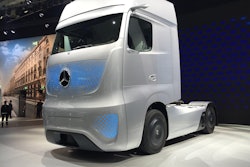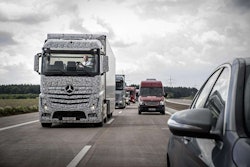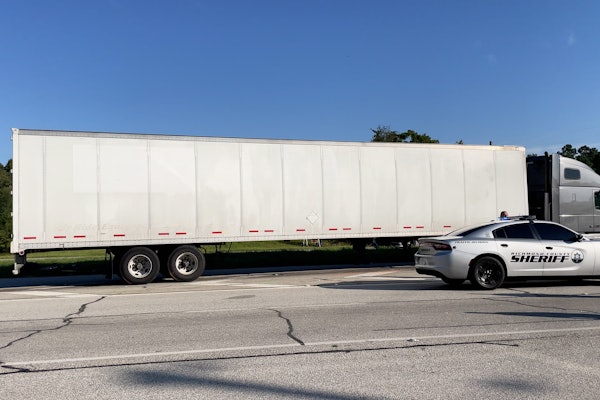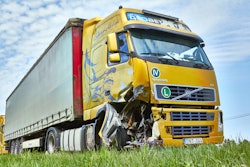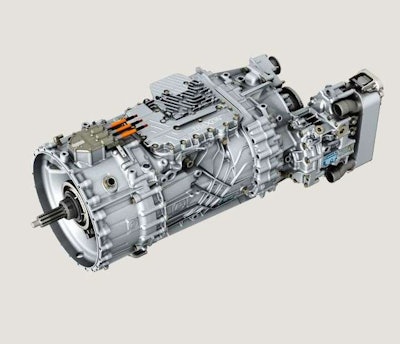
I had every intention, as I wrote that blog, of including some thoughts on the state of truck transmissions today. But, things got a bit long (that’s a common problem for writers). And besides, sitting on the topic means I don’t have to dream up a new one for this week’s blog!
At any rate, it occurred to me while romping around Germany and France, that transmissions in the North American truck market today sort of encapsulate many of the issues and angst surrounding the larger conversation about trucking and technology today.
Let me explain.
The day I wandered into CDL school in Mobile, Alabama, all I could see when I went out to the driving lot was that massive, 53-foot trailer sitting behind a battered old Freightliner Columbia tractor.
But after a few laps on the busy roads around Mobile, all I could think about was the 10-speed manual transmission in that old truck.
Turned out the trailer was the least of my worries. Getting my revs right, double-clutching, hitting my gear, keeping track of which range I was in, downshifting and doing everything right to get back in the proper gear when I did screw up (which happened often) took up most of my mental energy – on top of worrying about the afore-mentioned trailer, other cars, traffic laws and the 10 million other things that seemed to be jumping out a me every single second I was driving.
Learning to use a heavy-duty manual transmission is as much an art as it is a skill. It’s not quite as hard as learning to put a 53-foot trailer in a hole. But it’s close.
Flash-forward to today. I can drive a manual gearbox – but I’m not good at it. Most of the time editors get behind the wheel today, the truck has an automated-manual transmission in it. I’m lucky if I drive a manual every 4 or 5 months now. And that’s not enough to stay proficient.
Last summer, on a Meritor test track in Wales, UK, I spent a few minutes driving a European tractor fitted with a synchronized heavy-duty transmission. It piqued my interest because it was exactly like driving an automotive manual gearbox. No double-clutching. Infinitely more forgiving in terms of matching revs for upshifts and downshifts.
And last week, at the ZF test track in Germany, I was able to repeat this experience. This time I was prepared to ask some questions.
It turns out synchronized transmissions are common in Europe. Expected, even. Naturally I wondered why they simply didn’t exist in North America. And the answer seems to be that Americans like things to be harder than they have to be. Unsynchronized transmissions are hard to master. Not every one can do it. So there’s a pride element at work there. Additionally, there’s a feeling that unsynchronized gearboxes are more robust – better suited to the rough-and-tumble world of North American trucking. Although the ZF engineers are quick to point out that their synchronized transmissions are proven million-mile performers.
All this got me to wondering: Fleets are struggling to find new drivers. Transmissions are arguably the hardest vehicle system to master when learning to drive a big rig. Would synchronized gearboxes help new drivers ease into trucking without the upcharge of spec’ing automated manual transmissions?
Or are we in the midst of another trend – one that I feel is far more likely: That the acceptance of automated manual transmissions has reached a point that they will overtake manual gearboxes completely and become the standard spec for North American heavy-duty vehicles?
Time will tell. There are – without a doubt – trucking applications that absolutely demand a heavy-duty manual transmission. And many highly experienced drivers feel manual transmissions give them a greater degree of control over the truck with obvious safety and performance benefits. So it will be interesting to see how these “transmission wars” shake out. But the eventual outcome, I think, will say a lot about how the massive wave of trucking technology headed our way will be accepted by American fleets and drivers.


